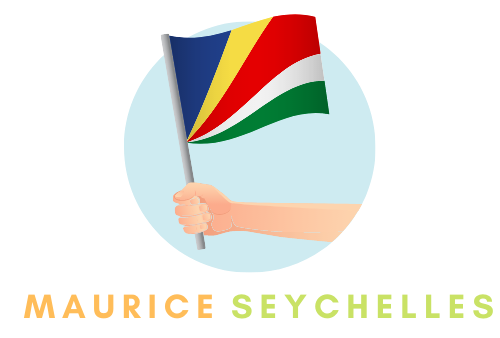Whether you are preparing for a casual game on the sand or gearing up for competitive play indoors, selecting the appropriate volleyball can significantly impact your performance and enjoyment. The right ball not only complements your skill level but also adapts to the specific demands of your playing environment. With numerous brands and models available, understanding the nuances between beach and indoor volleyballs becomes essential for making an informed choice.
Understanding the Key Differences Between Beach and Indoor Volleyballs
Beach and indoor volleyballs are designed with distinct characteristics to suit their respective playing surfaces and conditions. Recognising these differences helps players select a ball that enhances their game rather than hinders it. The construction, materials, and specifications vary considerably, reflecting the unique challenges posed by sand courts and hardwood floors.
Material composition and surface texture variations
The materials used in volleyball construction play a crucial role in how the ball performs. Indoor volleyballs typically feature genuine or synthetic leather panels that provide a smooth surface for consistent handling and control. Synthetic leather offers durability and affordability, making it a popular choice for training sessions and recreational play. Genuine leather, on the other hand, is often reserved for professional matches due to its superior feel and responsiveness. The stitching quality and panel construction also contribute to the overall integrity of the ball, ensuring it maintains its shape and performance over time.
Beach volleyballs, by contrast, are crafted to withstand outdoor elements such as moisture, sand, and direct sunlight. These balls commonly use synthetic materials with a slightly textured or dimpled surface, which aids in grip and control even when the ball is wet or sandy. The outer layer is designed to resist water absorption, preventing the ball from becoming heavy or waterlogged during play. This difference in surface texture between indoor and beach volleyballs is not merely aesthetic; it directly affects how players interact with the ball, influencing serves, passes, and spikes.
Size, Weight, and Pressure Specifications for Each Type
Standard volleyballs for adults typically measure between sixty-five and sixty-seven centimetres in circumference and weigh approximately two hundred and sixty to two hundred and eighty grams. However, the weight can vary depending on the age group and skill level of the players. For younger players aged six to nine, a lighter ball weighing two hundred to two hundred and twenty grams is recommended, while those aged ten to fourteen benefit from a ball weighing two hundred and thirty to two hundred and fifty grams. Players aged fifteen and above should use the official weight to prepare for competitive standards.
Ball pressure is another critical specification, with official regulations stipulating an inflation level of two hundred and ninety-four to three hundred and eighteen millibars. This pressure range ensures the ball has the correct bounce and responsiveness, which is vital for accurate passing and controlled play. Indoor volleyballs generally adhere strictly to these specifications, as they are used in regulated environments where consistency is paramount. Beach volleyballs, while similar in size and weight, may have slight variations in pressure to accommodate the softer landing surface of sand, which can absorb some of the ball’s energy upon impact.
Essential factors to consider when selecting your volleyball
Choosing the right volleyball involves more than simply picking a ball off the shelf. Several factors must be evaluated to ensure the ball matches your playing style, skill level, and the conditions in which you will be playing. From material preferences to budget constraints, each element plays a role in determining the best option for your needs.
Skill level requirements and playing environment conditions
Your skill level is one of the most important considerations when selecting a volleyball. Beginners often benefit from lighter, larger balls that offer slower and more predictable trajectories. Models designed for novices, such as those made with soft foam materials, help reduce arm pain and make learning the fundamentals more comfortable. If you are looking to improve your game and are ready to visit shopconnect website for quality options, you will find that these beginner-friendly balls are ideal for those just starting out.

Intermediate players who have developed most of their technical skills and train two to three times per week require a ball that offers better trajectory and control. Synthetic leather models are well-suited for this level, providing a balance between performance and affordability. Advanced players, on the other hand, should opt for balls approved by organisations such as the FIVB, which are designed for professional matches. These high-performance volleyballs often feature microfibre construction with a dimpled surface, delivering perfect trajectory and accuracy for competitive play.
The playing environment also dictates the type of volleyball you should choose. Indoor volleyballs are optimised for smooth, controlled surfaces and consistent lighting conditions. They are designed to respond predictably to the floor, allowing for precise ball handling and strategic play. Outdoor volleyballs, particularly those intended for beach use, must contend with wind, moisture, and uneven surfaces. Their construction reflects these challenges, with enhanced grip and water resistance to maintain performance in variable conditions.
Durability Standards and Budget Considerations for Your Purchase
Durability is a key factor, especially if you plan to use the volleyball frequently or in demanding conditions. High-quality stitching and robust panel construction ensure the ball withstands repeated impacts and rough handling. Brands such as Wilson, Mikasa, Molten, Tachikara, and Baden are renowned for their commitment to producing durable, reliable volleyballs that meet rigorous standards. Wilson, for instance, offers both indoor and outdoor models, including the AVP Official Beach Volleyball and the K1 Gold Indoor Volleyball, each designed to excel in its respective environment.
Mikasa serves as the official ball supplier for the FIVB, with popular models like the VLS300 Beach Volleyball and the MVA200 Indoor Volleyball. Molten produces high-quality options such as the BV5000 Beach Volleyball and the FLISTATEC Indoor Volleyball, both of which are trusted by players worldwide. Tachikara is known for innovative designs, including the SV5W-GOLD Indoor Volleyball and the SV-MNC Volley-Lite Volleyball, which caters to beginners. Baden also offers excellent choices, such as the Perfection Beach Volleyball and the Perfection Elite Indoor Volleyball, combining quality with performance.
Budget considerations are equally important, as volleyballs range from affordable training models to premium professional options. While it may be tempting to opt for the cheapest available ball, investing in a quality volleyball can enhance your playing experience and reduce the need for frequent replacements. Many retailers offer a variety of price points, allowing you to find a ball that fits your budget without compromising on essential features. Personal preferences, such as the feel and grip of the ball, should also guide your decision, as these subjective factors can significantly impact your comfort and confidence on the court.
Ultimately, the best volleyball for your needs depends on a combination of factors, including your skill level, the type of play you engage in, and your personal preferences. By carefully considering these elements and exploring the offerings from reputable brands, you can select a volleyball that supports your development and maximises your enjoyment of the game.
